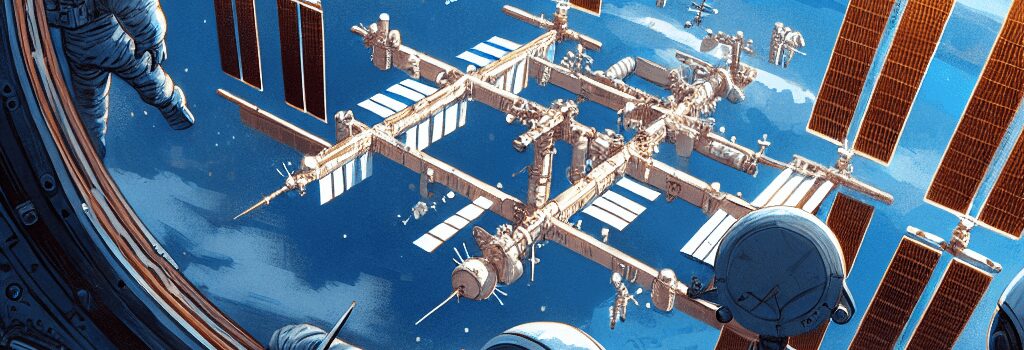NASA Struggles to Adjust ISS Operations After Budget Proposal

In May 2025, the White House Office of Management and Budget unveiled a “skinny” FY2026 budget request that calls for a sharp reduction in U.S. activities aboard the International Space Station (ISS). The proposal, driven by a desire to reallocate resources toward lunar and Martian exploration, mandates cuts to crew size, research capacity, and planned hardware upgrades—saving roughly $508 million out of the station’s $3 billion annual budget. NASA officials are now evaluating an array of cost-saving measures, each carrying significant technical and programmatic trade-offs.
Key Proposed Cuts and Operational Adjustments
- Crew complement reduction: Scale back Crew Dragon missions from four astronauts to three, beginning with Crew-12 in February 2026.
- Extended mission durations: Increase standard expedition lengths from six to eight months to reduce the frequency of Dragon and Soyuz launches.
- Alpha Magnetic Spectrometer (AMS) upgrades cancelled: Suspend installation of the additional silicon tracker layer designed to triple data collection on dark matter and antimatter studies.
None of these measures are finalized; they represent NASA’s initial response if the White House cuts are enacted by Congress later this year.
Technical Implications of Crew Reductions
Reducing Crew Dragon seats from four to three appears to save on life-support consumables, cargo mass, and per-flight operating costs—estimated at $60 million to $90 million per mission. However, the fixed overhead for ground support, Mission Control staffing, and vehicle processing remains nearly identical. By cutting one NASA astronaut per flight (a 50% reduction on Dragon), NASA projects roughly a one-third drop in annual research hours aboard the ISS.
Life Support and Consumables Trade-offs
Extending mission durations to eight months aligns U.S. operations with Russia’s Soyuz MS-27 standard, but poses challenges for Environmental Control and Life Support Systems (ECLSS). The station’s Water Recovery System, which recycles up to 93% of condensate and urine, would undergo increased duty cycles, raising the risk of system downtime. Similarly, the Oxygen Generation Assembly would require more frequent maintenance cycles, potentially increasing spare-part mass requirements on resupply missions.
Canceling the AMS Tracker Upgrade: Science vs. Budget
The AMS payload, delivered in 2011, uses a 0.5 Tesla superconducting magnet and multiple detector layers to search for dark matter signatures. The planned silicon tracker layer 9 upgrade—costed at $40 million and manifested on an upcoming Cargo Dragon flight—would have increased tracker resolution by 20 µm and tripled particle flux statistics. Experts such as Dr. Maria Grazia (CERN) warn that foregoing this upgrade risks losing time-critical physics data ahead of the AMS de-orbit in 2030.
Deep Dive: ISS Commercialization and LEO Economy
NASA Administrator nominee Jared Isaacman has emphasized “maximizing the ISS’s remaining value” and incubating a robust low-Earth orbit (LEO) economy. Cutting crew and research hours undermines that vision by throttling commercial payload opportunities and delaying private module development. In a recent NASA advisory meeting, industry representatives from Axiom Space and Northrop Grumman highlighted that sustained station usage at current activity levels is key to attracting investment for successor platforms.
International Collaboration at Risk
With 15 partner agencies contributing modules, funding, and research, the ISS represents a unique multinational framework. Reducing U.S. crew slots could trigger reciprocal adjustments by Roscosmos, ESA, JAXA, and CSA. In March 2025, ESA Director General Josef Aschbacher warned that “any unilateral cuts risk eroding decades of trust and shared infrastructure.” Technical working groups are now evaluating cross-training requirements and rebalancing robotic operations (e.g., Canadarm2 tasks) to mitigate impact.
Next Steps: Budget Negotiations and Congressional Outlook
The White House budget is merely the opening bid in a months-long appropriations process. Congress has historically funded the ISS above the President’s request, and bipartisan support remains strong for maintaining full research capabilities through 2030. A final FY2026 appropriation may not be enacted until late this fall. Meanwhile, NASA plans to refine cost–benefit analyses, incorporating expert testimony from the National Academies’ Space Studies Board and updated life-cycle cost models for ISS operations.
Expert Opinions
- Dr. Eric Rubin, ISS Program Scientist: “Stretching expeditions and trimming crew seats saves nominal dollars but could cost us in lost science and increased risk to crew health over longer durations.”
- Dr. Elena Serova, Roscosmos Flight Engineer: “Harmonizing U.S. and Russian mission lengths makes sense operationally, but requires careful alignment of consumables and maintenance schedules.”
- Dr. Maria Grazia, Particle Physicist: “Cancelling the AMS upgrade is akin to closing a window on a premier laboratory before its full potential is realized.”